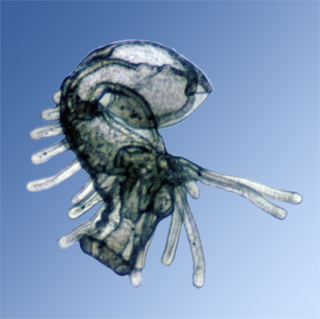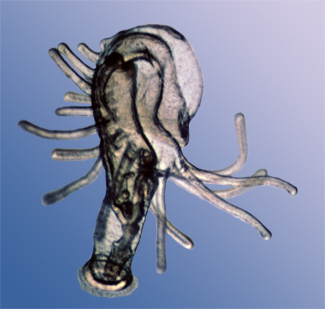| Actinotrocha branchiata Müller, 1846 Adult: Phoronis muelleri Selys-Longchamps, 1903 |
|
| Synonyms:
Actinotrocha brownei Selys-Longchamps, 1907 Actinotrocha B Ikeda, 1901 Actinotrocha D Ikeda, 1901
| . |
 ° References of the most recent published diagnoses
|
| Diagnosis |
|
Last update: *
Body transparent with numerous pigmented ameobocytes (yellow pigments located at the base of the tentacles, around the preoral lobe and near the ciliated perianal ring). Up to 2 mm in length.
|
|
References on Actinotrocha branchiata
|



